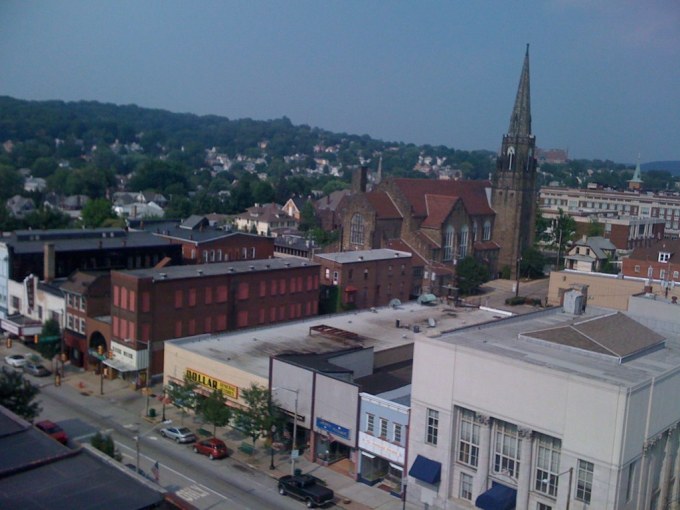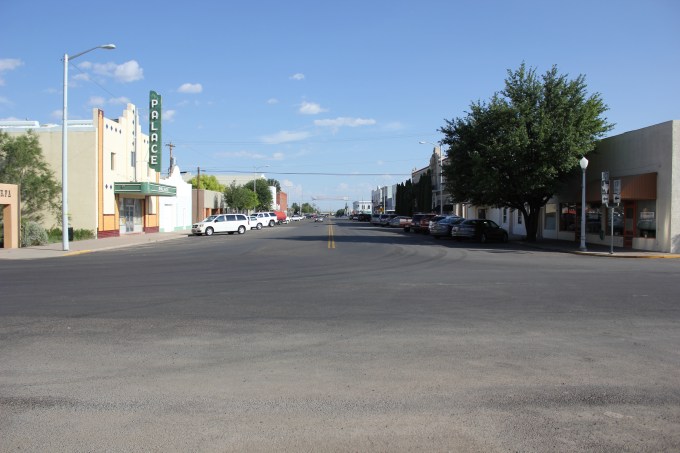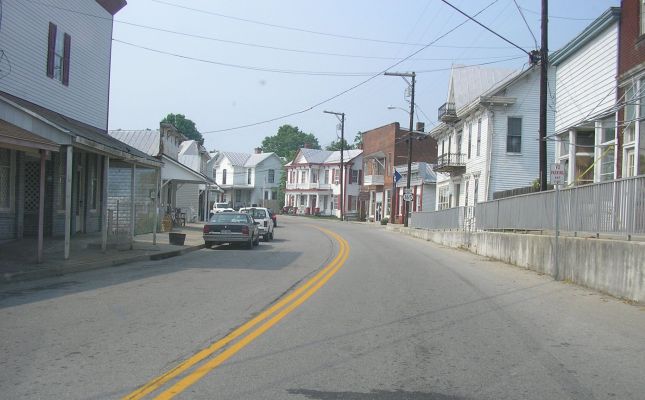While gridlock has taken hold in a paralyzed Washington, D.C. mayors across the country are taking a pragmatic approach to solving local problems and its time for tech to reach out to them.
“For years now, Washington, D.C., has been paralyzed by partisan gridlock… Rather than complaining, cities have started innovating, and we’ve seen this incredible appetite for ideas among mayors,” Jonathan Bowles, executive director of the Center for an Urban Future (CUF), a New York think tank, told Fast Company.
The United States has 3,0007 counties. And all of them have an appetite to shift the momentum from the federal government to the communities where people live and work. This can’t just involve coastal cities or urban areas within states. Rather, after Trump’s election, now is the moment to redouble policy efforts in communities across the country from states to rural counties.
Cities from Chicago, Los Angeles, Boston, to New York have been leading the way to think about how to provide better services and engagement opportunities. They’ve been exciting places where rich networks of talent from academia to philanthropy have been helping foster ecosystems to catalyze new policy solutions.
Several cities across the country are launching new roles and responsibilities, including Chief Technology Officers, Chief Innovation Officers, Chief Data Analytics, Data Scientists, even roles on Financial Justice and Financial Empowerment.
Fellowships are attracting top talent into city government and bringing in creative and diverse backgrounds, including ethnographers and designers, to fill these new roles. Innovation units, often located within Mayor’s offices, are working to engage diverse stakeholders to be a part of the process of governance.
One of the challenges of federalism is that by design a structure which works in one community is not a one-size-fits-all model.
Part of re-focusing energy on localities requires the time and commitment to the smaller cities, rural, and exurban communities across the country. It is not enough to have a few star cities in the United States. This risks only furthering the deep divides across cities. The cultural aversion to change within bureaucracies is real.
One of the challenges of federalism is that by design a structure which works in one community is not a one-size-fits-all model. Following the election of President Trump, now is the moment for deeper research and analysis on the opportunities and challenges of what we should (and shouldn’t) replicate.
The lessons from the “smart” cities need to be translated, re-mixed, and even debunked to ensure that we are not creating deeper cleavages between some communities and others in our country.
There are a host of illustrative experiments occurring across communities that are leveraging policy innovation, data, and technology for more responsive and inclusive governance. The engagements that work focus on process to ensure that diverse stakeholders are a part of decision making.
There are many civic organizations already doing this work, there is no need reinvent the wheel. Rather much more attention on processes that produce improved outcomes need the policy attention typically relegated to the federal level. Below is three examples which may serve as instructive for the ecosystem of stakeholders including technologists, philanthropy, academics, non profits, and government officials.

Photo courtesy of Flickr/Cynthia Closkey
Beyond the Usual Suspects
Wisconsin:
In Eau Claire, Wisconsin a local organization called Clear Vision is teaming up with stakeholders on a poverty summit to reduce the number of people living poverty in income insecurity and build more resilient and inclusive communities. Citizen action groups will work on key issues they identify as part of the engagement process.
A key component of this poverty summit is to bring in traditionally marginalized communities into the process including low-income households, rural poor, youth and black and Hispanic communities. There is even a community-supported, nonprofit journalism site to support the local work in Eau Claire, Chippewa, and Dunn counties.
As Michael Huggins of Clear Vision describes:
“There is a growing awareness in Eau Claire that a healthy, vibrant community goes hand in hand with a strong local democracy. And that local democracy begins with the conversations diverse people have about the kind of community they want, and is sustained by the work of ordinary people coming together to make that vision a reality.”
Oregon:
In Oregon, a “Kitchen Table” is enabling residents from across the state to contribute ideas, resources, and feedback to inform public policy. The Kitchen Table enables public officials to consult with representatives about key policy areas, crowdfund, and micro-lend for local startups and community businesses.
People can support small business across Oregon from Hillsboro to Clatskanie ranging from microbrewers to after school youth workshops. Wendy Willis, the Executive Director of Kitchen Table Democracy in Oregon notes, “By working to build ongoing infrastructure, we are making it possible for elected officials, community leaders, and citizens to stay in conversation about the state we all love.”
Another practice in Oregon is the Citizens Initiative Review, where a representative sampling of citizens convenes for deliberations over several days to discuss state ballot measures. After being established by the state’s bipartisan legislature in 2009, there have been six random representative samples of citizens for multi-day deliberations to draft voting guides written for the people, by their neighbors.
Penn State Professor John Gastil’s research demonstrates: the majority of Oregon voters were aware of the process; roughly ⅔ of those who read the statements compiled by their fellow citizens found them helpful; those who read the citizen statement learned more about ballot measures than those who read other portions from the official Voter’s Guide.
Part of re-focusing energy on localities requires the time and commitment to the smaller cities, rural, and exurban communities across the country.
New Mexico:
NYU Wagner and the Center for an Urban Future recently put out a report, “Innovation and the City”, which spotlights several cities across the globe that are leveraging innovative practices.
“TalentABQ” in Albuquerque, New Mexico is one example where public and private employers are testing a new employee hiring method. Instead of judging applicants only on their educational attainment, employers are committing to train workers with relevant skills on the job. With funding from the Kellogg foundation, Alburquerque has 31 TalentABQ Skill Up centers across the city in libraries, community centers, and community colleges.
These centers provide resources, computer access, and free access to courses. Residents can take a nationally validated WorkKey exam at one of the 31 centers to assess job readiness in core skills that include critical thinking and teamwork. Participating employers integrate skill-based hiring into their hiring practices by adding skill scores to their job postings.
As of June 2016, more than 6,000 job postings were on the TalentABQ website. The goal is to generate an indicator beyond educational attainment or a traditional resume to signal an employee’s ability to perform a job.
Further research is needed to test the outcomes of this type of employee skill-based initiative as well as ensure that systemic biases and discrimination are not amplified on the test. There is always the risk that tests become “weapons of math destruction” as Cathy O’Neil outlines in her recent book. Yet, the move towards more skill-based hiring and vocational training is an important component of revitalizing communities from the bottom up.

Photo courtesy of Flickr/Nan Palmero
Towards a Civic Infrastructure
These examples suggest that across the United States there are community organizations and new pilots to re-engage citizens in the workforce and in the hard work of revitalizing and improving our communities.
It is critical to take a county by county level approach and not fall into the trap of focusing only on cities. The so-called divides between those in New York City and the rustbelt are mirrored across Washington state between Seattle and Spokane.
This is what the University of Wisconsin political scientist Cathy Kramer, author of “The Politics of Resentment,” described as she traveled to Wisconsin communities:
… people would say: All the decisions are made in Madison and Milwaukee and nobody’s listening to us. Nobody’s paying attention, nobody’s coming out here and asking us what we think. Decisions are made in the cities, and we have to abide by them.
There is no easy answer to make people empowered. We have to start by deliberatively engaging people across the country — not only in the big cities or the smaller cities; but across all communities.
This requires tapping into existing networks and civic organizations, leveraging data, technology and policy innovations, and re-shifting our focus from federal policy towards building an infrastructure of governance that is durable through collective development and buy-in from people.
